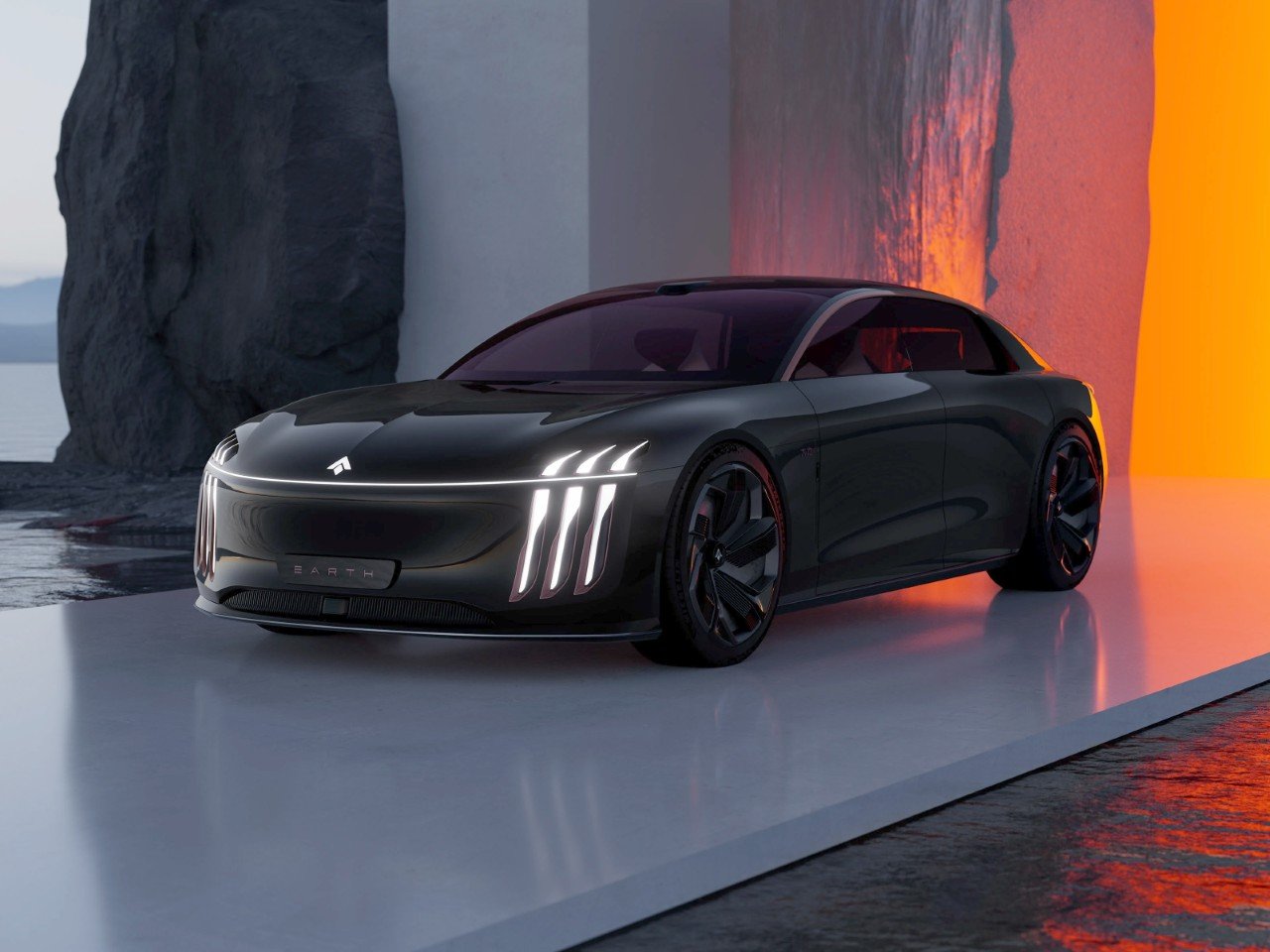GAC’s Hyptec Earth concept landed at Auto Shanghai 2025 with the kind of visual punch that makes you forget every other EV on the show floor. The Chinese automaker’s luxury division has crafted something that feels less like automotive design and more like biomimicry taken to its logical extreme. Every surface, every detail, every lighting element screams organic inspiration, and frankly, it works in ways that should make established luxury brands nervous.
The moment you see those headlights, you know you’re looking at something different. Three vertical slashes per side cut down the front fascia like claw marks, glowing with an intensity that suggests predatory awareness rather than mere illumination. They’re menacing in the best possible way, channeling everything from Wolverine’s adamantium claws to the jagged energy of a Monster logo, but refined into something undeniably premium. This signature alone will make every other EV headlight look timid by comparison.
Built on GAC’s Xingling safety architecture, the Earth takes the shooting brake format and sculpts it into something that appears wind-carved rather than CAD-designed. The exterior flows in unbroken curves from nose to tail, with lava-inspired surfacing that captures light like molten rock. There are literally no straight lines anywhere on this car, a design philosophy that extends from the macro proportions down to the smallest details.
The front three-quarter view showcases how effectively the Earth’s proportions work together, with the dramatic headlight signature anchoring a face that manages to look both aggressive and elegant. From behind, the car maintains its clean, sculptural presence without resorting to fussy details or unnecessary visual noise. The dark, glossy finish amplifies every curve and surface transition, creating a sense of depth that makes the car appear almost liquid in certain lighting conditions.
The side profile reveals a cab-rearward silhouette riding on impossibly large aero wheels that look like they belong in 2035, while the rear maintains the same flowing aesthetic with a slim LED tailbar and bold HYPTEC badging. The overall stance suggests something naturally formed rather than engineered, which is exactly the point GAC’s international design team was driving toward.
Step inside and the nature theme becomes almost overwhelming in its thoroughness. The seat headrests curl forward like the tips of unfurling leaves, while feather-shaped motifs accent the door handles with tactile elegance. The dashboard houses a curved tablet that literally curls into the surface when powered down, then unfurls when activated, with the display itself bending to match the physical form. This kind of kinetic interface design represents genuine innovation in automotive UX, moving beyond the static screens that dominate current luxury interiors. The cabin wraps occupants in a two-tone burgundy and white palette, with bio-leather surfaces and plush textures that reinforce the organic theme.
Multiple screens integrate seamlessly into the flowing dash architecture, while zero-gravity seats promise the kind of comfort that turns long drives into meditation sessions. The steering wheel abandons traditional circular forms for an open-loop design that feels like holding polished driftwood. Even the floor covering appears to be some kind of shaggy white material that looks more living room than automotive, but somehow works within the Earth’s cocoon-like interior environment.
Whether any of this translates to production remains the big question, but GAC has created something that feels genuinely different in an EV landscape increasingly dominated by generic minimalism. The Earth proves that sustainable luxury doesn’t have to mean sterile aesthetics. Sometimes, the most advanced technology looks exactly like what nature has been perfecting for millions of years.
The post Why the Hyptec Earth’s Organic Aesthetics Are a Bold Rejection of Cybertruck’s Brutalism first appeared on Yanko Design.

